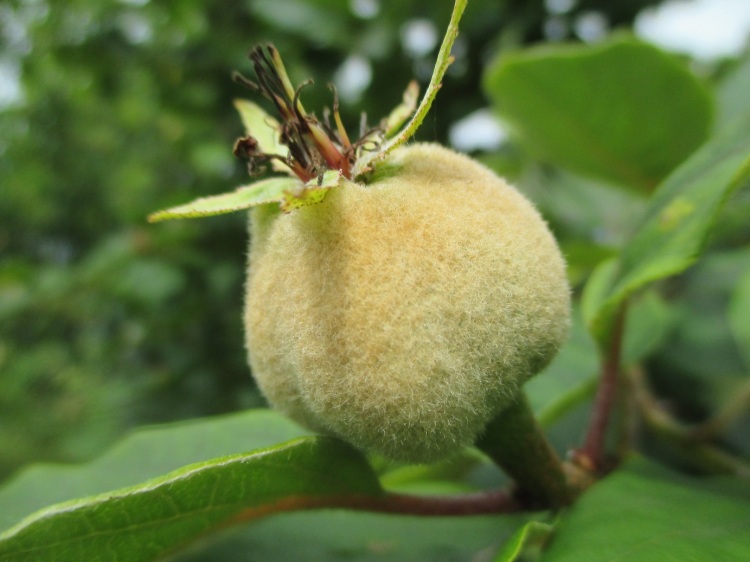The quince tree at The Farm is the first time I have come across this ancient fruit. This is not the flowering quince, Chaenomeles japonica, widely grown as a wall shrub for its decorative spring flowers. We are talking about Cydonia oblonga grown for its fragrant fruit, which like medlars must be bletted, or left to almost rot, before eaten. If this does not appeal then they make delicious jams, puddings and wines. Allegedly. The Portuguese word for this golden pear shaped fruit is marmello, and it is from this fruit that the original marmalade was made.
Last year this tree managed to flower but produced no fruit. The fact that it spent some of this time horizontal, until properly staked, may have had something to do with its barrenness. This year we have had flower, it has set fruit and had another go at flowering. I am hoping that this fruitling, snug in its velour all-in-one, will hold on tight until autumn, when we can sample its delights.

It doesn’t look real. Lovely.
LikeLike
Hope they get to maturity, will be interesting to see them grow.
LikeLike
Interesting–the original source of marmalade. I wonder if there is any similarity in taste to oranges.
LikeLike
I wonder, if they let me have one I will let you know!
LikeLiked by 1 person
I love your blog, but must just add a word on quinces – don’t let them blet! They are ripe when still rock hard, but yellow and fragrant. Picked then, they will scent a room wonderfully. They take quite a lot of cooking, but the flavour and texture are both excellent – a little reminiscent of a sturdier pear. Good poached in spiced wine or, pre-cooked a bit, added to an apple pie.
LikeLike
Thank you, wow that was a lucky escape! They sound wonderful, I just can’t wait.
LikeLike